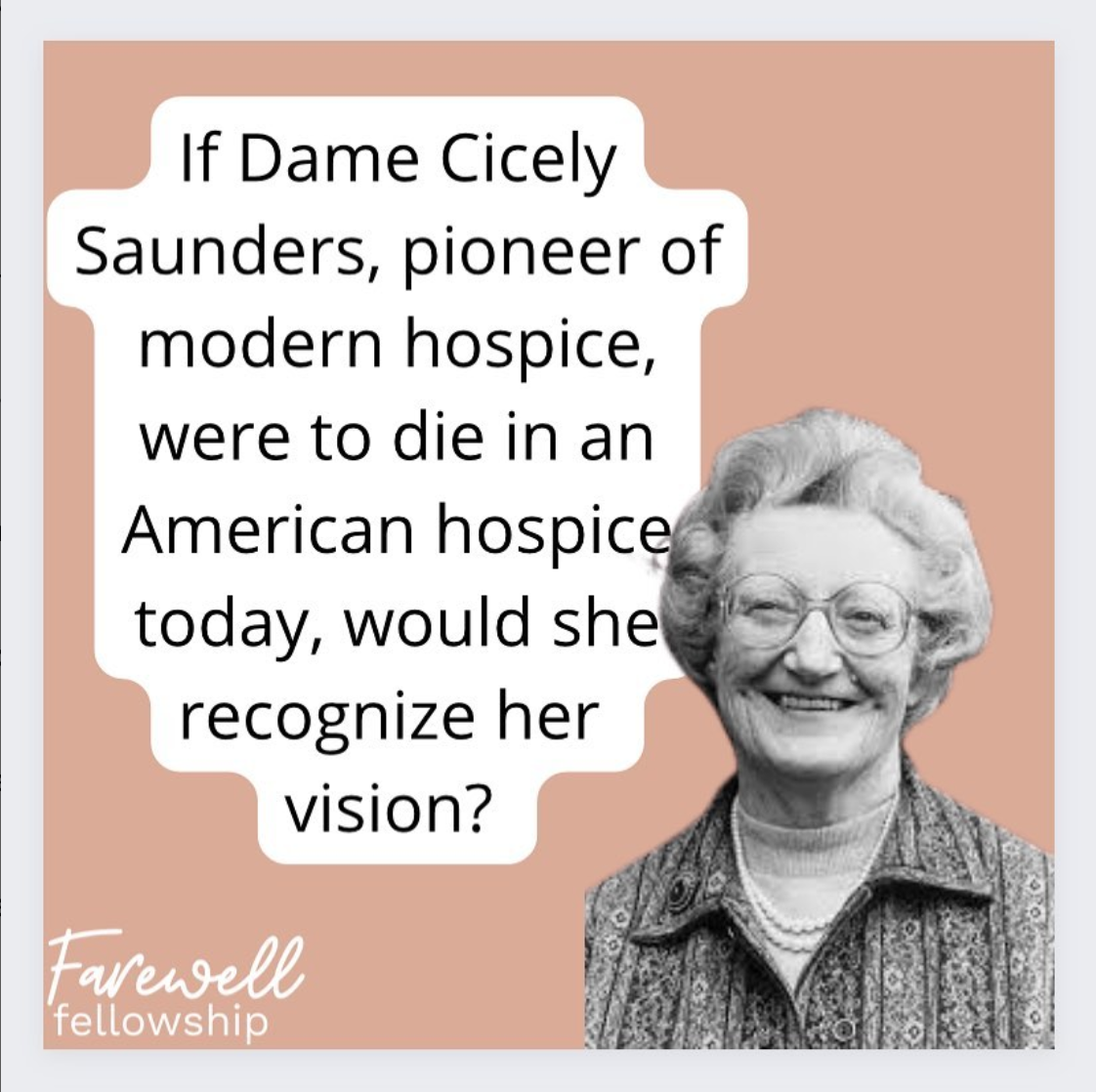Dame Cicely Saunders
Born in 1918, Cicely Saunders studied humanities at Oxford University before dropping out to become a Red Cross war nurse with the Nightingale School of Nursing. Later Saunders finished her BA as a medical social worker, caring for cancer patients in a local hospital. In 1948, Saunders fell in love with one of her patients, a 40-year-old Polish Jew who escaped the Warsaw Ghetto and was alone and dying. Their relationship prompted the first vision for what Saunders would later found (in 1967) as St. Christopher’s Hospice, after she completed her medical degree with a research fellowship in Pharmacology.
The environment that Dame Saunders began her career regarded dying as taboo and saw medical professionals treating dying with contempt. Additionally, the mainstream perspective on pain relief was to offer large doses as needed instead of continual pain management. These were the first two hallmarks of Saunders’ vision and have remained integral in the modern American hospice system as well.
Saunders also defined “total pain” in advocacy that each individual’s care should address the physical, emotional, social, and spiritual dimensions of distress; once the patient’s physical pain was managed, the emotional, social and spiritual unfolding of the dying process would be supported. In fact, St. Christopher’s walls are filled with original artwork, has beautiful gardens and a warm gathering room. Furthermore, Saunders wrote (1979) that once a terminally ill patient’s pain was addressed, the patient may be suitable for active treatment again. One of her adamant principles was “…the traffic of a hospice is not always one way” (1981). Saunders vision for hospice may more closely resemble what we consider palliative care in America today.
Perhaps, Dame Saunders would be relieved that we have finally changed our perspective on end-of-life to prioritize pain relief and value dying as it’s own part of the cycle instead of a failure of it. But also, as she was known to often say throughout her time at St Christopher’s ”there is so much more to be done.”

